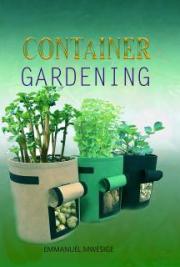BONSAI SECRETS
Author: Marian Costita
This book is free. It can’t be sell, copy or reproduce without the author approvement.
www.nykonnet.com/Bonsai/bonsaitree.html
Introduction
The art of bonsai has been around for years. Its culture is deeply rooted in the Asian culture and it adds not only a touch of class to your garden and home, but it also can provide a beautifully sedate focus for relaxation and meditation – right in your own home!
The Japanese believe in simplicity when it comes to aesthetics. What could be more beautiful than a simply crafted tiny version of a normal sized tree? An old Chinese proverb says
“The Man Who Removes A Mountain Begins By Removing A Few Small Stones.”
This is the art of bonsai. You take a tree that is meant to grow many feet tall and allowing it only to grow a foot or two.
Growing and sculpting bonsai trees can be quite a satisfying hobby. It is a hobby; however, that requires a tremendous amount of patience. When you take a simple sapling and mold it to your desire, you’ll be rewarded with a beautiful piece of art you can truly be proud of!
To the Japanese, there is a link to many of the ideals that their society is based on. Zen Buddhism - where the pastime originated, man, nature, elements and change all are intertwined into this unique method of meditation and expression. To our world now, bonsai is viewed as a hobby that allows a greater understanding and being with nature and also a way to enhance our gardens.
In this book, we will introduce you to bonsai techniques and how to grow your own bonsai masterpieces. The beauty of bonsai is that there is no definitive “right way” to do it. We can offer up tips and tricks to craft your own bonsai, but how. Enter into the world of bonsai and gain a new insight into life!
The evolution of bonsai over the past two centuries is truly amazing. Perhaps it is symbolic of how small the world is getting as people from Europe to the United States and even in Greenland are exploring bonsai as a hobby.
In the e-book „Bonsai Trees: Growing, Trimming, Sculpting And Pruning” you will find much more about the history of bonsai.
Details at:
www.nykonnet.com/Bonsai/bonsaitree.html And now it’s your turn! First, let’s explore styles of bonsai.
Bonsai Styles
It is important for you to remember, as a beginner, that no single bonsai style is the “right” style. Bonsai is meant to be a representation of a tree in nature. Crafting a bonsai masterpiece is tantamount to how YOU view that tree. You are not learning from a bonsai master, you are simply being given instruction on how to create your own bonsai. What you make of it lies simply in your own mind.
There are two general styles of bonsai: the classic (koten) and the informal or 'comic' (bunjin). In the former, the trunk of the tree is wider at the base and tapers off towards the top; it is just the opposite in the 'bunjin', a style more difficult to master.
When you start a bonsai, always remember that you are working with a living plant. Look carefully at its natural characteristics and you may discern within them a suitable style, or styles.
The five basic bonsai styles are:
- formal upright,
-informal upright,
-slanting (or windswept),
-semi-cascade
-and cascade.
All have their own individual beauty and serenity.
If you want to know more about each bonsai style and how to create them visit
www.nykonnet.com/Bonsai/bonsaitree.html
Growing a Bonsai Indoor or Outdoor?
One school of thought is that trees are outdoor plants and putting them into pots does not transform them into indoor plants. Many believe that if you bring bonsai inside, they will die. While not necessarily true, you will probably see much better results if you let your bonsai flourish outside rather than indoors.
Just remember that you are going to be growing and cultivating a tree in a tray or pot. Trees need lots of sunlight and care to grow. Just because the trees are in a tray or pot instead of the ground doesn’t mean they don’t need the same care.
It is far more difficult to cultivate indoor Bonsai than outdoor Bonsai. Outdoor species very rarely die immediately when grown inside, they can survive for months. However they slowly lose their health and vigor in the adverse conditions they have to cope with, and become susceptible to bugs and disease until they finally start to show outward signs of ill-health; yellowing leaves, lose of foliage and eventually death.
Alright, then, how do you start your own bonsai masterpiece? Let’s first consider the tools you’ll need.
Tool Box For Bonsai Tree
Bonsai requires very few tools. Tools, however, make certain jobs or tasks easier and quicker. Tools can range from a few dollars to a few hundred dollars. As with most things, you get what you pay for.
The range of quality (and price) in tools is immense and it is suggested that you buy the bestbasic set of tools that you can afford. You will come to appreciate them with time, and, if you care for them, they will last you a long, long time.
There are three tools that are essential to even beginning the process of shaping a tree for bonsai. Which are the tools? You will find it in the e-book „Bonsai Trees: Growing, Trimming, Sculpting And Pruning”.
For more details:
www.nykonnet.com/Bonsai/bonsaitree.html
Grow From Seeds or Buy Trees?
You can start your bonsai from seed, but be warned, it can take awhile to see your results. Unless you’re starting your bonsai hobby at age 4, being able to see the fruits of your labor will probably not come to reality.
While it may be nice to be able to have complete control over your bonsai from the beginning, we have to advise against it.
Trees used in bonsai aren’t special in any way. They are exactly the same as the trees you see all around you every day. So, essentially, don’t plant your bonsai from seed.
Get some more immediate satisfaction by purchasing a young sapling from a nursery or garden center. In doing so, you’ll be able to cultivate not only the tree, but your skills as a bonsai artist as well!
In general, select a specimen, that will be tolerant of the stress of being cut, wired, and replanted.
Be sure that the plants you consider meet the requirements for good bonsai.
Let’s look at some prime species for bonsai tree growing.
Trees Best Suited For Bonsai
Almost any type of tree or shrub will be suitable for bonsai. In general, most experts agree that pine trees aren’t good for the beginner. When you are ready to work on your first tree you should select a species that is "forgiving" to the beginner.
One of the most often recommended is the dwarf garden juniper. They are readily available, take pruning well, can be worked on most of the year, and are generally inexpensive. They also root well as cutting, so you can begin starting your own "mini nursery" as you shape your first tree.
There are some other species of trees that are “perennial” favorites among bonsai growers.
About beech trees, cedar, cherry, gingko... and much more species in the e-book: „Bonsai Trees: Growing, Trimming, Sculpting And Pruning”.
Visit:
www.nykonnet.com/Bonsai/bonsaitree.html
What to Look For In Your Tree
In general there are five things that you should look for in nursery stock.
First, look at the roots and check to see if they give the appearance of a strong foundation. The roots, at the base of the trunk, should appear to gently spread out in a radial pattern (this will be less apparent on junipers) and should both provide a sense of stability and invite you to follow the line of the tree, focusing your attention on the trunk. Good roots invite you to examine the tree from the ground up!
If the roots look good, begin to examine the trunk. The qualities you are looking for in the trunk depend somewhat on the style of the tree.
In almost all cases, however, a thick base which tapers gradually and gently to a thin apex will make for a nice tree. If you are thinking about a formal upright design, you will want a very straight trunk, with little or no curvature. If you are considering other styles, you will want to examine how the trunk "moves."
For the other things consult this ebook: „Bonsai Trees: Growing, Trimming, Sculpting And Pruning”.
www.nykonnet.com/Bonsai/bonsaitree.html
Planting Your Bonsai
Since bonsai trees are meant to be grown in a container, you’ll want to select an appropriate one to foster the growth of your tree.
The bonsai with its container and soil are physically independent of the earth since its roots are not planted in it. It is a separate entity, complete in itself, yet part of nature. This is what is meant by the expression "heaven and earth in one container".
A bonsai tree should always be positioned off-center in its container, for not only is asymmetry vital to the visual effect, but the center point is symbolically where heaven and earth meet, and nothing should occupy this place.
In the e-book „Bonsai Trees: Growing, Trimming, Sculpting And Pruning” you will find much more about this thing.
www.nykonnet.com/Bonsai/bonsaitree.html
You’ve got your tree, you’ve got its container, now let’s look at how to prune and shape your bonsai.
Pruning and Trimming Your Bonsai
A great deal of pruning is often necessary if starting with a nursery plant. Only excess foliage and undesirable limbs should be removed. Make all cuts above a bud, a side branch, or a main fork of the tree.
Remove all buds except those on the outside of the trunk to force growth outward and upward. Leave stubs flush with the stems. Avoid cutting back so far that the main branches are weakened.
Do not shear bonsai as you would a hedge; the objective is to make the plant look like a replica of a mature tree. Keep branches growing toward open space and away from each other. Do not prune too zealously; plants must have sufficient leaves for photosynthesis.
Heavy pruning usually only takes place once in the life of the bonsai. Once the basic form is established, shaping is done by nipping or pinching back.
This procedure controls new growth. Nipping is done to shape the plant and to develop luxurious foliage. Nip off tiny spurs that appear on the trunk before they are large enough to leave scars when removed.
And much more... in the ebook: „Bonsai Trees: Growing, Trimming, Sculpting And Pruning”
www.nykonnet.com/Bonsai/bonsaitree.html
When the plant has been pruned to your satisfaction, it can then be wired.
Wiring The Bonsai
Wiring is an important part of the process of styling your bonsai and nearly all well designed bonsai have been wired at some point in their development.
Though at first a daunting technique to master, it gives the bonsai enthusiast better control and manipulation of the trunk and branches of his/her bonsai.
By coiling wire around the limbs of the bonsai, the enthusiast is able to bend the tree into a desired position upon which it is held by the wire. In a matter of weeks or months, the branch or trunk 'learns' and stays in position even after the wire is removed.
When is the best time to wire your tree? That depends!
When To Wire?
With the large number of tree species commonly used for bonsai and the wide variation of climates in which readers will be wiring, it is impossible to state exactly when your tree should be wired.
There are also pros and cons of wiring at any particular time of the year with any particular type of bonsai. Theoretically, most tree species can be wired at most times of the year though trees wired during the winter may need frost protection in certain climates.
For more details about this things visit:
www.nykonnet.com/Bonsai/bonsaitree.html
After spending so much time making your bonsai look the way you want it to, you must, of course, take care of it!
Watering and Fertilizing
Watering might seem like an easy technique, but it is the second most common cause of Bonsai-related problems. Under watering or allowing the compost to dry out completely will instantly kill or badly damage most trees; however over watering can just as equally cause ill-health and eventual death from root rot and disease.
The most important rule to remember is that trees should be checked for their water requirement daily but should only be watered as required. You should never water to a routine. This can lead to continually sodden compost which literally suffocates the roots.
And much, much more... in the ebook: „Bonsai Trees: Growing, Trimming, Sculpting And Pruning”
www.nykonnet.com/Bonsai/bonsaitree.html
The rest of the story
Bonsai is not an art of perfection. It is an art of scope and personal preference. You will make mistakes. This is normal and occurs even with bonsai masters.
You will kill trees. This is a sad fact of the activity, especially as you start out. You are dealing with living things, and you must be respectful of that. Commit yourself to understanding why every tree dies and what can be done to prevent it. Learn from your mistakes and do your best to prevent them in the future.
Perhaps most importantly, understand that when you put a tree in a pot you are committing yourself to the care of that tree. You cannot simply ignore it or it will die. Bonsai is a responsibility as well as a hobby. If you practice it with care and patience, he rewards are tremendous.
If you want to know all about bonsai order the ebook: „Bonsai Trees: Growing, Trimming, Sculpting And Pruning”, available at:
www.nykonnet.com/Bonsai/bonsaitree.html
Bonus Gift # 1:
„Bonsai Trees: The most popular species to grow”
Table Of Contents:
Introduction
Juniperus
Ficus
Pinus
Japanese White Pine
Black Pine
Chinese Elm
Japanese Maple If you want to know all about Bonsai, order the ebook: „Bonsai Trees: Growing, Trimming, Sculpting And Pruning”, available at:
www.nykonnet.com/Bonsai/bonsaitree.html
Bonus Gift # 2:
„Bonsai Trees: Seasonal care information”
Table Of Contents:
Introduction
Seasonal Care: Spring
Seasonal Care: Summer
Seasonal Care: Autumn
Seasonal Care: Winter
Tropical Bonsai Care
Bonsai Care on Holiday If you want to know all about Bonsai, order the ebook: „Bonsai Trees: Growing, Trimming, Sculpting And Pruning”, available at:
www.nykonnet.com/Bonsai/bonsaitree.html
Bonus Gift # 3:
„Bonsai Trees: Repotting guide”
Table Of Contents:
Tools for repotting job
How to repot?
How to choose a pot?
Soil mix
Extra protection
General Tips If you want to know all about Bonsai, order the ebook: „Bonsai Trees: Growing, Trimming, Sculpting And Pruning”, available at:
www.nykonnet.com/Bonsai/bonsaitree.html
Happy Growing!!!







